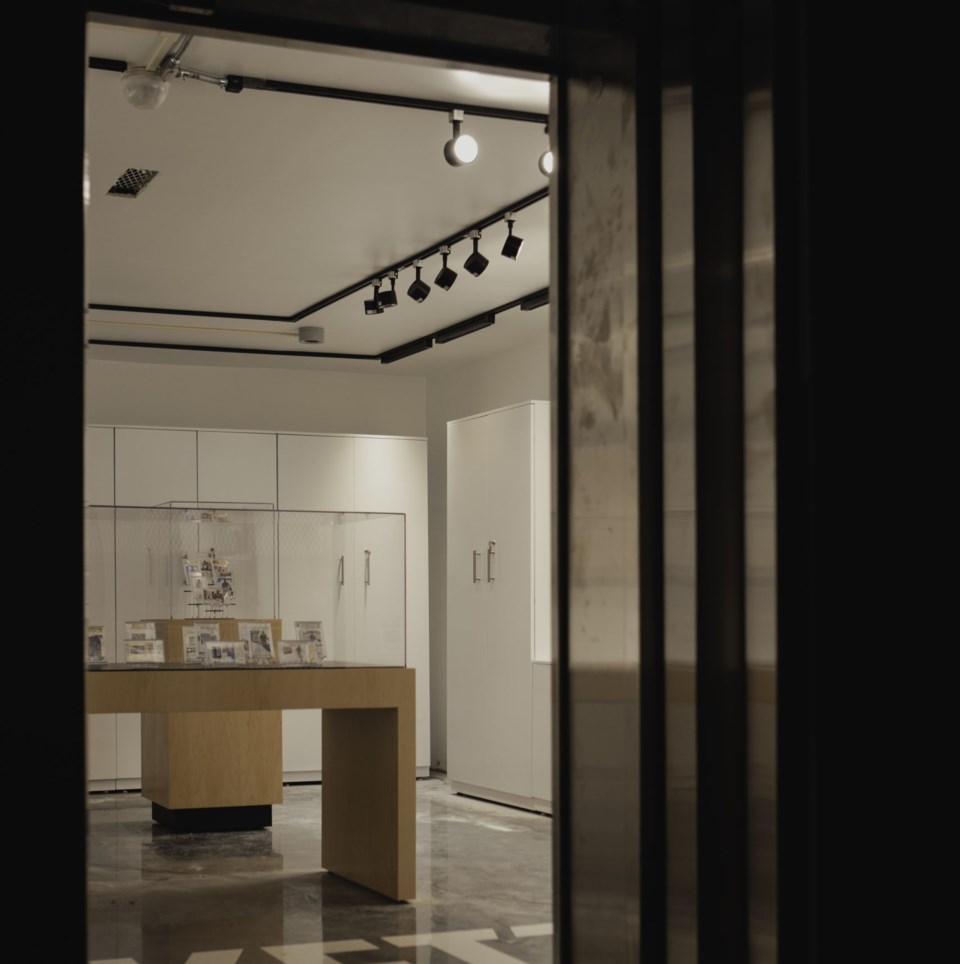“This is a multimillion-dollar vault,” Joe White tells me. The steel coffer is flood-proof and fireproof, the humidity is constantly checked and there’s 24-hour security, he adds.
White should know. He’s the vault keeper. “Inside,” he continues, “there are about four million dollars in assets.” White gestures to the man in a flannel shirt next to me, saying that even he doesn’t have access. Those assets aren’t bars of gold, precious jewelry or oil paintings by old masters. They’re sports cards and comic books — cornerstones of a multibillion-dollar industry.
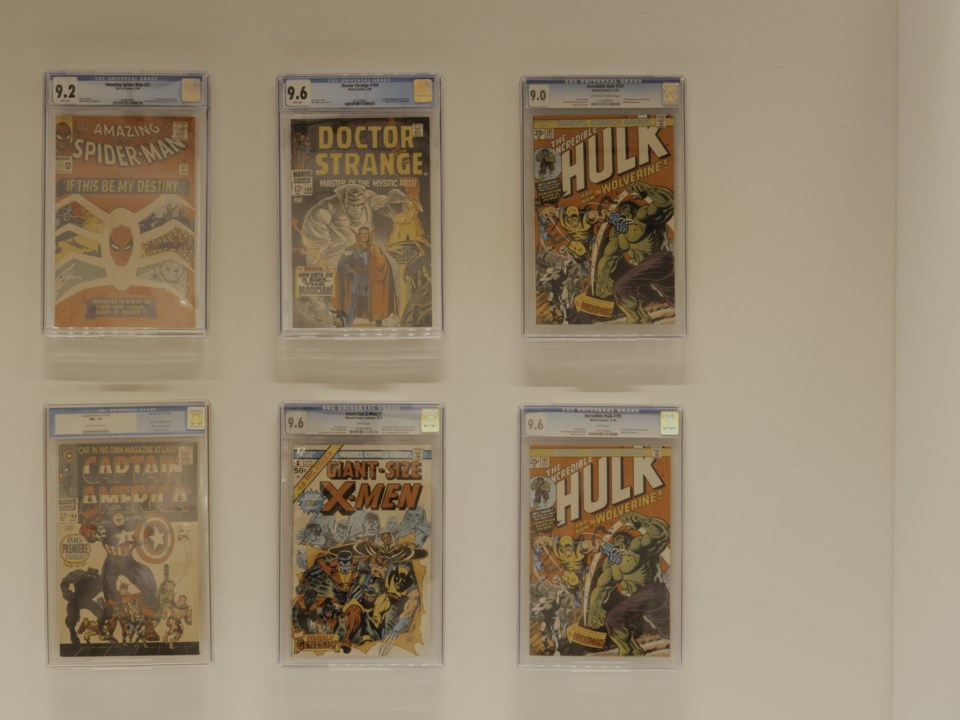
White enters the code, the vault unlocks and opens, and the three of us enter. The walls are covered with pristine comics (Giant-Size X-Men, issue 1, Spider-Man, issue 34 and Captain America, issue 100) and coveted cards (Michael Jordan, Wayne Gretzky and Nolan Ryan rookie cards). On the floor, the word “Beckett” is emblazoned in big blue letters.
Beckett Media is a collectibles leader. From the 1980s, it grew into a massive company that has become a hub for pricing, selling, grading and authenticating cards and other collectible items. In 2022, Beckett Media moved its headquarters from Dallas to Plano — a single-floor 10,000-square-foot building with a digital studio, recording space, gym, game room and office and meeting spaces. Oh, and the vault I’m standing in.
Company president Jeromy Murray — the man in the flannel shirt — hands me a card encased in a plastic slab. “Here’s a Mickey Mantle,” he says. “It’s worth a couple hundred thousand dollars.” Murray seems pretty chill about the whole thing. I’m freaking out.
In my hand is what’s been called the Mona Lisa of baseball cards: the 1952 Topps Mickey Mantle. And while as a kid, I collected cards and met Mantle, who lived in Dallas, I’ve only once seen the card in person and certainly never held one (albeit encased in plastic). A mint version of this same card, graded 9.5 out of 10, is the most expensive card ever sold, fetching $12.6 million at auction in August 2022, nearly double the second-most expensive card, a tobacco card of Pittsburgh Pirates shortstop Honus Wagner. The Mantle card I’m holding is graded 3 out of 10, making it more affordable. “But you could probably trade that for a Lamborghini,” says White. Probably, but I wouldn’t.
The collectible market has changed since I was a kid. Cards, most of which are worthless today, were printed en masse. Now, there are super rare one-of-one cards — and even cards embossed with precious metals and gems. The vault, I’m told, isn’t just to squirrel away items. The idea is that the images of the vault’s collectibles will also be stored in digital wallets that can change ownership through the blockchain, with the physical objects staying put. Collectors can fly in and see their assets. There are plans for big-screen TVs, couches and a little wine bar.
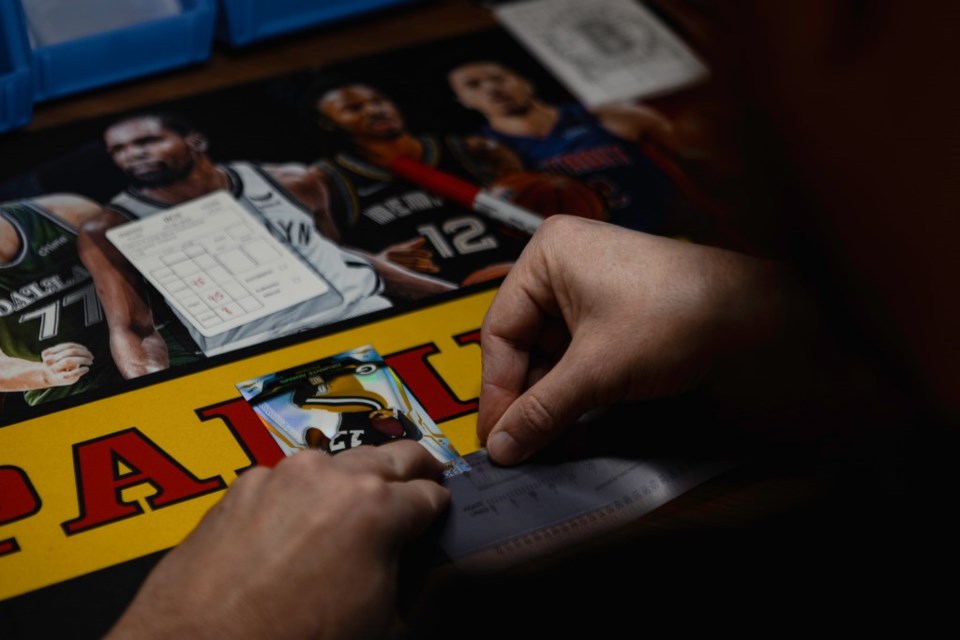
Beckett’s business isn’t only listing card prices in its magazines. Collectors and dealers send in their cards to be graded on a 1-10 scale, with 10 being the best. This is the world of millimeters. On the way out of the vault, we enter H.Q.’s sprawling main area, with clusters of desks decorated with figurines from movies, comics and anime. Trained professionals — “graders” — sit hunched over at desks with magnifying loops and rulers, examining whether the cards are properly centered, looking for sharp corners and checking the cards’ conditions. On the opposite side, comic book experts do likewise. A gem mint 10-graded piece can go for exponentially more than one graded very good or good. Nearby, another group of pros looks at autographs, judging their authenticity and, once again, rating them on a scale of 1-10.
In North Texas during the late 1980s and early 1990s, baseball card collecting exploded in popularity. Collectors flocked to card shops like Nick’s Sports Cards on Campbell Road and the long-shuttered Baseball Card Exchange in Richardson. Other sellers popped up like mushrooms, and every month, heck, every weekend, there seemed to be card shows where card dealers filled convention centers, and stars of the day, like José Canseco, and of yesteryear, like Willie Mays, wrote their names for money. Beckett, founded by James Beckett, who had long since sold the company, was at the center of it all, with collectors reading the monthly price guide and tracking the valuation charges like stocks. Price guides for football, basketball and hockey cards inevitably followed.
But then, the hobby took a dip. Interest waned, card shops shuttered and weekly card shows were no more. Once again, the hobby came roaring back during the pandemic. Few saw it coming. I didn’t. Neither did Murray.
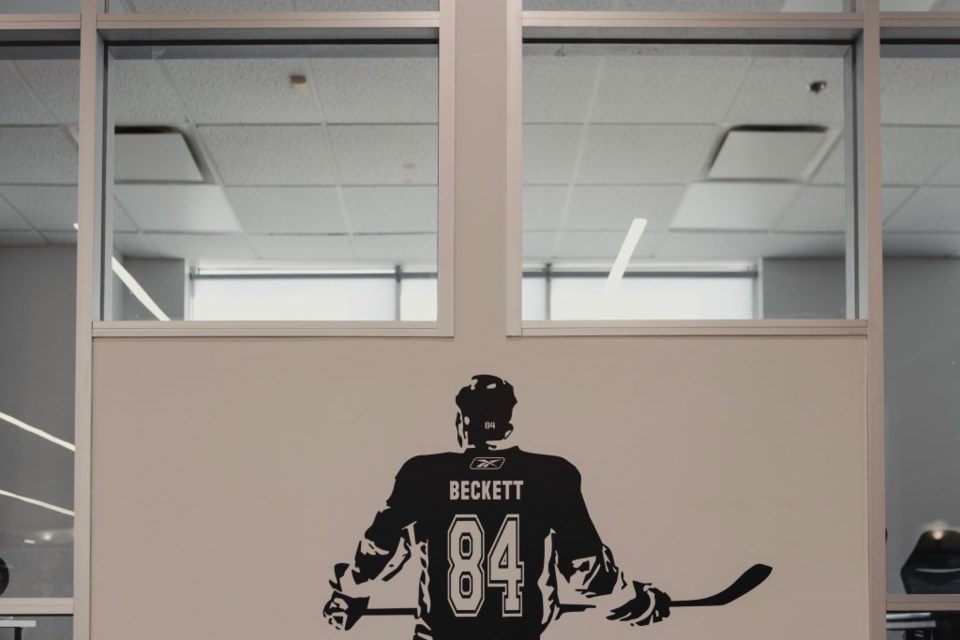
In March 2021, there was an internal meeting at Beckett. The world shut down. There were fears about what would happen to the collectible market. Contingency plans were devised. “Instead of the market declining, it just shot the other way,” says Murray as we head toward his office. “And we couldn’t keep up with the demand. People wanted to get their stuff back quickly so they could sell it.” Beckett had never seen anything like it. In 2020 and 2021 — the “anomaly years,” says Murray — the sports collectible market grew 80%, and cards were selling for 10 to 20 times more than previously. I ask if the market is down now. “The market is down compared to 2021, which was an all-time high,” says Murray. “We had never seen anything like it. But compared to the normal days of 2019, it’s up 20% to 30%.”
During the height of the pandemic, people were at home, not going out to bars and restaurants or even traveling. Stimulus checks were in the mail, and The Last Dance was on Netflix. The collectible market started going bonkers, and not just for sports cards and autographs but also for trading card games like Pokémon and Magic: The Gathering. Big money meant a flood of fakes.
I eye a Pete Rose-signed ball in Murray’s office. It’s real — the hit king signed it for the exec. The Frank Robinson-signed ball next to it is genuine, too. But the Michael Jordan-signed golf balls in plastic cubes on Murray’s desk? Fake. “My dad found these at an estate sale,” he says, handing me a phony Jordan-signed golf ball. “Our autograph authenticator guys immediately rejected them.”
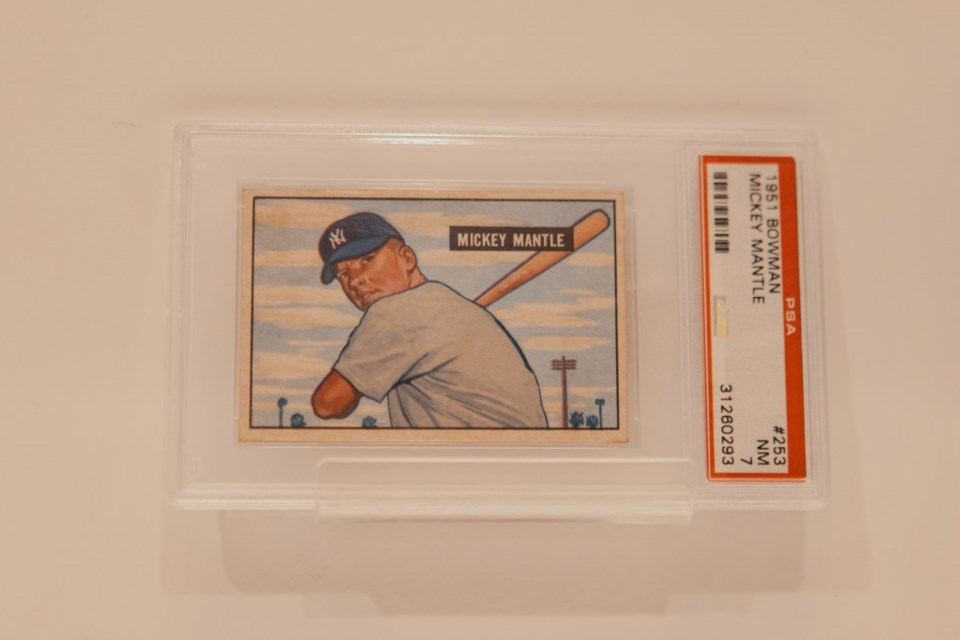
The autograph experts look at each signature under magnifying glasses — the flow, the stroke and even the type of pen used. These markers are all compared against known real-deal autographs. Some signatures, especially Jordan’s, are often faked, while others, like Steph Curry’s scrawl, are hard to authenticate. “And you can have someone sign it right in front of you,” says Murray. “And our guys will say they can’t authenticate it because it’s just scribble.”
But Beckett’s experts are so good that they can finger the forgery’s provenance. “Our autograph authentication guys can tell if a customer probably bought the fakes from, for example, Southern California,” says Murray. “They know where it’s coming from, and they’re good enough that they can sort of pick it apart.”
Autographs aren’t the only fakes to worry about — the cards themselves are, too. “In the past few years, the fakes coming out of China, trading cards games like Pokémon and Magic: The Gathering, are so good,” says Murray. “When sales are so massive, the crooks are going to come out.”
Whomp. Whomp. Whomp. I watch the encapsulation assembly line. Workers put baseball cards in the machine, and they are encapsulated in plastic with a sonic seal. Sports cards and comics are now joined by tickets — sports, concerts and even amusement parks. “Tickets are our newest business,” says Murray, who, moments earlier, introduced me to Steve, who is decked out in a jean jacket and black-rimmed glasses. Three cans of opened Monster energy drink sit on his desk. Steve shows me a vintage ticket to the Star Tours opening at Disneyland in 1987. It is beautiful.
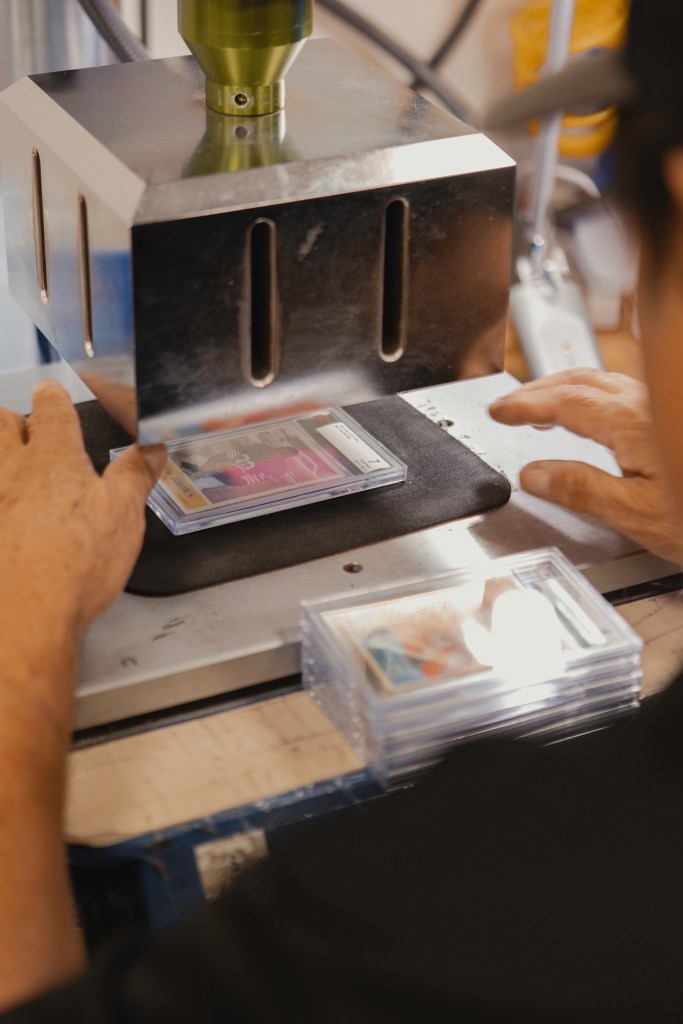
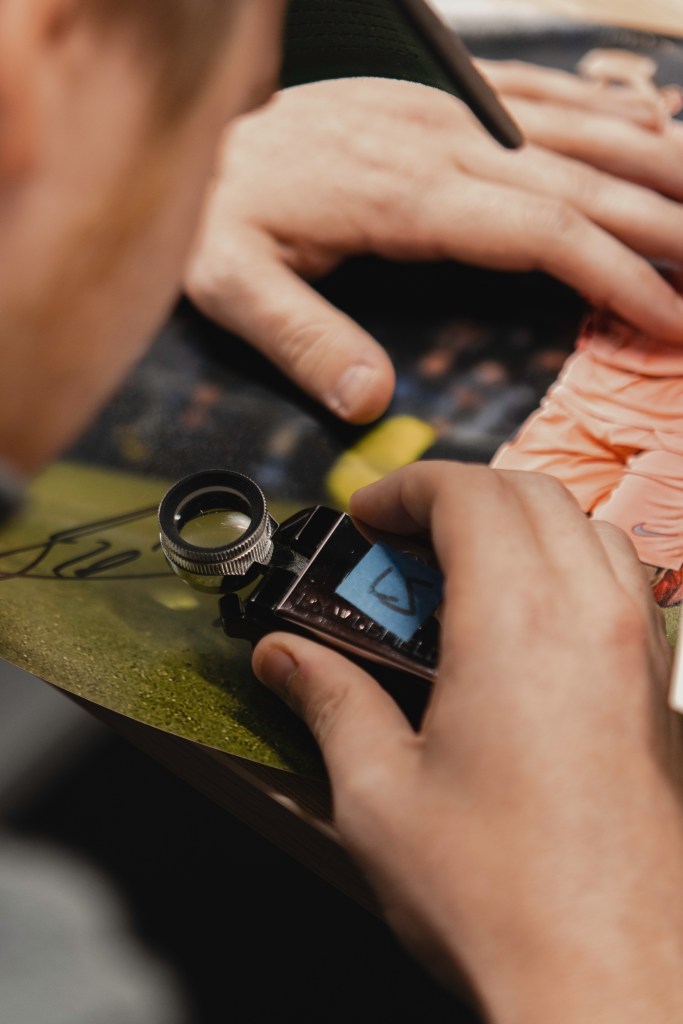
“I like my job,” says Murray, who flunked the grader test when applying for a job two decades ago (he ended up in sales and rose through the ranks). “I’m surrounded by cards, comic books and autographs — and now, VHS tapes." That’s right, videotapes. Next to the assembly card and comic encapsulation lines, there is a table of graded and encased VHS tapes. I see a 9-graded, sealed copy of Encino Man, the 1992 comedy with Pauly Shore and Brendan Fraser. But are these old tapes worth anything? Some are. Last year, a mint, sealed VHS copy of Back to the Future owned by Tom Wilson, the actor who played Biff, fetched $75,000 at auction, while mint-sealed copies of VHS movies The Goonies and Jaws netted $50,000 and $32,500, respectively. I eye a VHS copy of Scarface signed by Al Pacino, wondering what that’s worth.
“There is a real market for VHS tapes,” Murray says. “And it’s so crazy because that’s the stuff for years and years, you thought that you go to a garage sale or flea market, right? Like they’re in a basket for 50 cents apiece, and who has a VCR anymore, and things like that.” But during the pandemic, the collectible market started booming. “And things like that, that just sort of popped out of something that you would have never thought of before.”
When I was a kid, I’d hear adults lament about how their parents threw away their baseball cards. Now, decades later, as I head out of the offices of the collecting magazine I read as a kid, I’m wondering what happened to my videotapes.

